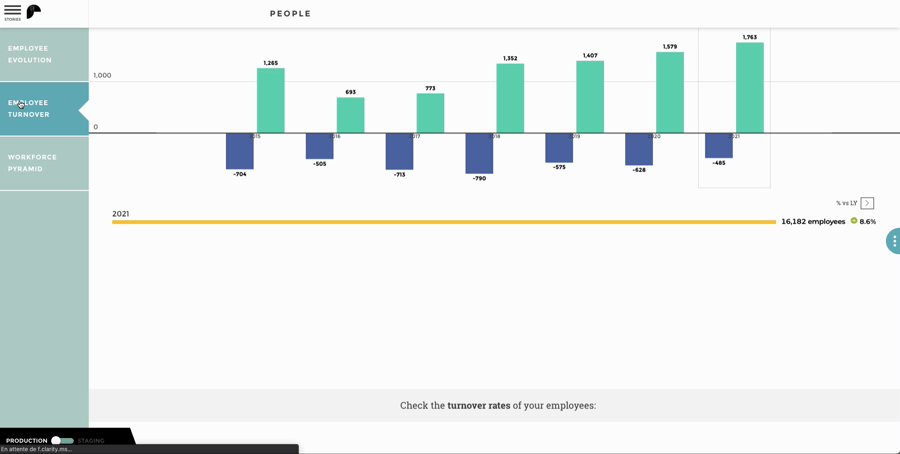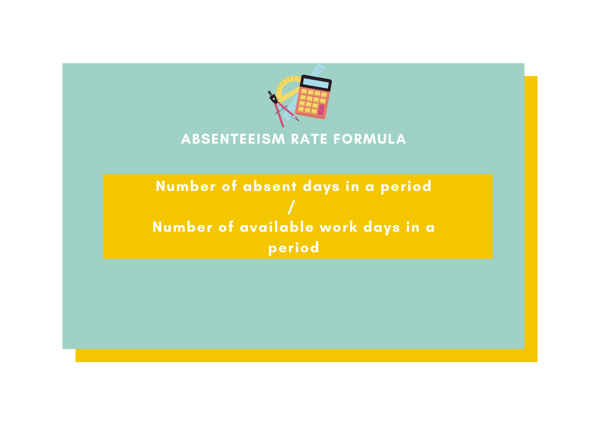Absenteeism Rate - How to Calculate it?
The absenteeism rate, often used synonymously with absence rate or absence percentage, is a measure of unplanned absences in the workplace (due either to sickness or other causes). Absenteeism rate can be measured on an individual, team, or organizational level, each of which gives valuable insights about the health of that organization.
Absence, in the context of this calculation, can be simply defined as a period of being away from work. Absences are caused by illness (either physical or otherwise), false reporting (e.g. taking a sick day without being sick), or absence that is due to other reasons. Holidays and tardiness are not baked into the absenteeism rate.
High levels of absenteeism are, understandably, an indicator of organizational problems and inefficiencies.

How to Calculate the Absenteeism Rate?
First, collect your data. Absentee data should account for, at a minimum, the number of days an individual, group, or team has amassed as well as the corresponding dates of those absences. Additionally, you should factor in the number of available workdays in that period.
Absenteeism rate = the number of absent days in a given period / the number of available work days in a given period

Absenteeism rates are typically assessed on an annual basis, but you can use whatever time period is most relevant for you.
To make use of the figure, absenteeism rates are often reported by different teams, departments, or regions so that they reflect pockets of high (or low) absence and which lead to more effective, contextualized change. They're often included in strong HR management dashboards.
Some other key metrics that are often used in conjunction with absenteeism rates include: average absence duration (in days), zero absence rates (or the frequency of zero absences), and absence cost.
What is Considered to be a High Absenteeism Rate?
Absenteeism rates vary by company, geographic locations, and industries.
People get sick. Life happens. It’s therefore unrealistic to aspire to a 0% absenteeism rate. Taking a few days off per year is normal, so typical absenteeism rates are found in the 1-3% range. Keep in mind that weekends and public holidays are not accounted for in the calculation.
Furthermore, there will always be anomalies. For example, someone may get hit particularly hard by a specific illness and have a higher absenteeism rate. This is why it's useful to assess the metric at a team or department level as opposed to individually. Organizational absenteeism rates are therefore (at least typically) more meaningful.
Higher than normal absenteeism is likely due to stress, burnout, miscellaneous conflicts, or other health issues that are more than merely physical ailments.
How to Lower the Absenteeism Rate?
There are many things that organizations can do to effectively manage absenteeism rates. Here are some of them:
Create a positive work culture: make sure that your employees aren’t afraid to call in sick! Lower than average absenteeism rates could be an indicator that people don’t feel comfortable doing so which, in the long term, will likely create more problems than it solves.
Allow flexible working policies: adding a work-from-home allowance can reduce absenteeism. When employees are able to work from home they might, for example, be less likely to be absent from work due to concerns around putting their colleagues at risk.
Train management: better management around handling employee absence can help to shorten absenteeism periods. Support improved communication and clear management structures.
Improve your policies: increasing or improving paid time off policies is logically shown to reduce absenteeism rates.


-png.png?width=700&name=CTA%20Template%20%E2%80%94%20Guided%20Analytics%20(1)-png.png)